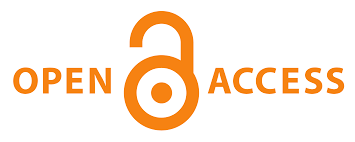Investigating Student-Lecturer Interactions in EFL Classroom: A Speech Acts Analysis
Main Article Content
Afifuddin Afifuddin
Within educational settings, the exploration of signals presents enough opportunities to analyze the dynamic exchanges between teachers and students. Gaining insight into the consequences of sign usage in educational settings can improve teaching methods and foster a greater understanding of the intricacies of human communication. This study investigates the complexities of speech acts in the process of learning the English language, with a specific emphasis on illocutionary speech actions between students and lecturers. Gathering data from 24 students, who were randomly selected from a single class, was done using Searle's taxonomy of speech acts. Verbal exchanges were documented and examined utilizing pragmatic analytic methodologies. The results demonstrate a prevailing reliance on representatives, underscoring a significant focus on effective communication skills and values. Directives, which are intended to influence the activities of listeners, are commonly used, while expressives and commissives are less frequently employed. This distribution highlights the central emphasis on the exchange of knowledge and the solicitation of information or actions during classroom interactions. The novel finding of this research is the recognition of a distinct hybrid speech act that incorporates components of representatives and directions. This indicates a fresh approach where students can effectively communicate information while also influencing their peers' comprehension and actions.
Abdikarimova, M., Tashieva, N., & Abdullaeva, Z. (2021). Developing students verbal communication skills and speech etiquette in english language teaching. Open Journal of Modern Linguistics, 11(1), 83-89. DOI: https://doi.org/10.4236/ojml.2021.111007
Ard, M. J. (2024). Structured Analytic Techniques: A Pragmatic Approach. International Journal of Intelligence and CounterIntelligence, 37(2), 617-633. DOI: https://doi.org/10.1080/08850607.2023.2241308
Baugh, A. D., Vanderbilt, A. A., & Baugh, R. F. (2020). Communication training is inadequate: the role of deception, non-verbal communication, and cultural proficiency. Medical Education Online, 25(1). DOI: https://doi.org/10.1080/10872981.2020.1820228
Bonvillain, N. (2019). Language, culture, and communication: The meaning of messages. Rowman & Littlefield.
Borchmann, S. (2020). The intentionality of questions–a critique of Searle's analysis of speech acts. Scandinavian Studies in Language, 11(1), 20-55. DOI: https://doi.org/10.7146/sss.v11i1.121360
Croddy, W. S. (2002). Performing illocutionary speech acts: an analysis. Journal of Pragmatics, 34(8), 1113-1118. DOI: https://doi.org/10.1016/S0378-2166(02)00044-9
Humaira, H., Safrita, K., & Yanti, F. S. (2022). Language Politeness In Directive Speech Acts In The Dialogue Of Youth In Blang Naleung Mameh Village. JETLEE: Journal of English Language Teaching, Linguistics, and Literature, 2(1), 18-25. DOI: https://doi.org/10.47766/jetlee.v2i1.210
Humphries, T., & MacDougall, F. (1999). “Chaining" and other links: Making connections between American Sign Language and English in Two Types of School Settings. Visual anthropology review, 15(2), 84-94.
Ishihara, N., & Cohen, A. D. (2022). Teaching and learning pragmatics: Where language and culture meet (Second). Routledge.
Kim, J. (2019). Being Polite or Appropriate? The Sociolinguistic Aspect of Politeness in Speech Acts and a Pedagogical Approach for Pragmatic Awareness and Strategies Focused on Refusal. MA TESOL Journal, 5(1), 77–89.
Leow, R. P., & Li, F. (2024). Input Processing in Spoken Versus Written Language. The Routledge Handbook of Second Language Acq//;/uisition and Input Processing.
Lewiński, M. (2021). Conclusions of practical argument: A speech act analysis. Organon F, 28(2), 420-457.
Muntasir, M., Rahman, F., & Haekal, M. (2022). The Effects Of Corrective Feedback On Fluency And Accuracy In 4/3/2 Activity: A Case Of Students At ELTO Spell-Out Program. Elite: English and Literature Journal, 9(1), 42-54. DOI: https://doi.org/10.24252/elite.v9i1.26526
Nielsen, N. M. (2020). Expanding Searle’s analysis of interrogative speech acts: A systematic classification based on preparatory conditions. Scandinavian Studies in Language, 11(1), 7-19. DOI: https://doi.org/10.7146/sss.v11i1.121359
Nyimbili, F., & Nyimbili, L. (2024). Types of Purposive Sampling Techniques with Their Examples and Application in Qualitative Research Studies. British Journal of Multidisciplinary and Advanced Studies, 5(1), 90-99. DOI: https://doi.org/10.37745/bjmas.2022.0419
Rahman, F. (2023). What We Talk About When We Talk About Language And Philosophy. Deepublish.
Rahman, F., Yuzar, E., & Zhou, W. (2023). Developing an Online Test Battery for Testing EFL Pragmatic Competence: What Can It Tell Us?. Scope: Journal of English Language Teaching, 8(1), 72-83. DOI: http://dx.doi.org/10.30998/scope.v8i1.17418
Ramanadhan, S., Revette, A. C., Lee, R. M., & Aveling, E. L. (2021). Pragmatic approaches to analyzing qualitative data for implementation science: an introduction. Implementation Science Communications, 2, 1-10. DOI: https://doi.org/10.1186/s43058-021-00174-1
Ruiz, M. R., & Spínola, N. O. V. (2019). Improving the intercultural communicative competence of English language students. Journal of Intercultural Communication, 19(1), 1-10. DOI: https://doi.org/10.36923/jicc.v19i1.774
Saldana, J. (2014). Thinking qualitatively: Methods of mind. SAGE publications.
Searle, J. (2014). What is a speech act?. In Philosophy in America (pp. 221-239). Routledge.
Silk, A. (2016). Discourse contextualism: A framework for contextualist semantics and pragmatics. Oxford University Press.
Siritman, B., & Meilantina, M. (2020). English speech acts of directives in class interaction. IJLECR (International Journal of Language Education and Cultural Review), 6(1), 1-8. DOI: https://doi.org/10.21009/IJLECR.061.01
Suryandani, P. D., & Budasi, I. G. (2022). An analysis of directive speech acts produced by teachers in EFL classroom. Journal of English Language and Culture, 12(1). DOI: http://dx.doi.org/10.30813/jelc.v12i1.2823
Van Thao, N., Purba, P. M., & Herman, H. (2021). Pragmatics Analysis on Commisive Speech Act in A Movie. European Journal of Humanities and Educational Advancements, 2(7), 70-74.
Vu, T. N. (2019). Theoretical constructs and practical strategies for intercultural communication. Journal of Curriculum Studies Research, 1(1), 43-53. DOI: https://doi.org/10.46303/jcsr.01.01.4
Ward, G. L. (2016). The Semantics and Pragmatics of Preposing. Routledge.
Yule, G. (2013). Referential communication tasks. Routledge.
Yule, G. (2022). The Study of Language. Cambridge University Press. DOI: https://doi.org/101017/9781009233446
Yuzar, E., Rahmiaty, R., & Rahman, F. (2022). “Am I Being Rude”: Exploring Indonesian Students’ Intercultural Communicative Competence in Inner Circle Countries. Lingual: Journal of Language & Culture, 13(1), 18–27. DOI : https://doi.org/10.24843/LJLC.2022.v13.i01.p02
Zou, L., & Yiye, Z. (2022). Review of Research on Development of Speech Act Theory and Its Application. International Journal of Linguistics, Literature and Translation, 5(12), 127-135. DOI: https://doi.org/10.32996/ijllt.2022.5.12.16
Zurriyati, Z., Perangin-angin, A. B., & Rahman, F. (2023). Exploring Al-Ghazali’s concept of education: A study of speech acts through English language lens. Englisia: Journal of Language, Education, and Humanities, 10(2). DOI: https://doi.org/10.22373/ej.v10i2.17515




